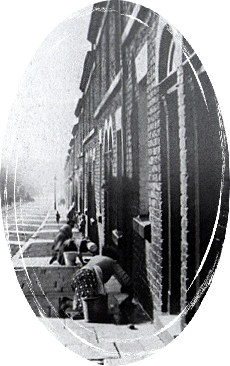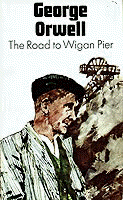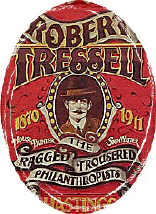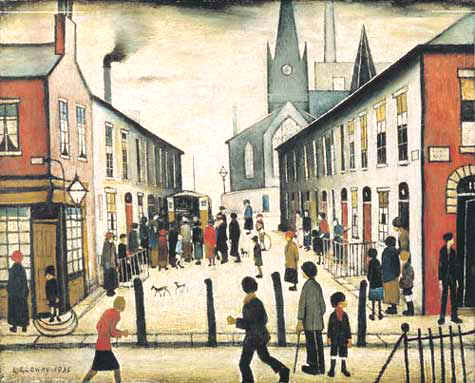 |
 |
 |
A New Way of Life
Edge Hill
---from 1885 to 1940
The two-up and two-down,
back-to-back, terraced houses were a vast improvement on the squalid courts but
despite the improvements, they could never be described as more than basic even
at the time ---they were in fact an upgraded version of the courts. Nevertheless, basic or not, they followed the precepts laid
down by Dr Duncan and others in the best way that they could within the
constraints of the era. Each house consisted of a front-room, a kitchen
and a yard on the ground floor and two bedrooms on the first floor---there was
no bathroom whatsoever. They all faced onto the street and were always
light and airy back and front. Most of the inhabitants took a pride in
their new homes and some of them were often described as 'little palaces'
especially if husband and wife pooled their skills but although it's true to say
that it was a far cry from the courts, life was not exactly easy.
A ritual of keeping the step pristine begun by the more dedicated housewives
gradually spread until every woman in every street assiduously cleaned the step
at least once a week or risked the disdain of her neighbours. Over a
period of time, the method of cleaning evolved into a vigourous rubbing of the
step with a stone supplied by a firm in Wigan. The stones were stamped
with a donkey and so the term "donkey-stoning the step" came into
being. The ritual was little enough in itself but in a wider sense it
denoted the new sense of ownership and pride in the new homes. For many
people life in the courts was still a reality as they waited their turn to enter
the new terraced houses---- many of them waited a very long time and courts were
still in existence right up to the war.
The toilets were all at the bottom of each yard within a brick shed. They
all had a wooden toilet seat, a rusted cast-iron cistern and newspapers cut-up
for toilet-paper and they all froze solid in the winter no matter how much
hessian you put round the pipes. It really couldn't be more basic but it
was sanitation, it worked and Dr. Duncan would have approved greatly.
Also to be found at the bottom of the yard, neatly fitted into a square hole in
the brick wall leading onto the entry was the bin. This thing weighed a
ton when it was empty but when it was filled with a week's rubbish required
Herculean efforts to just get it out of the wall. The bin was made of
steel and the men who shifted them were cast in the same mould. Some of
the bins were still smouldering with ashes from the fire when the binman hauled
them out of the gap in the wall, straight onto his back, and walked the full
length of an entry before tipping them onto a lorry. The men who did this
job were of truly heroic proportions and they made the coal-men look like wimps.
They make T.V. shows out of this sort of task these days.
To be fair to the authorities of the time, they had attempted to address every
one of the logistical problems pertaining to health as laid down by Dr. Duncan
as the above description illustrates. There was sanitation, a water supply
and a rubbish removal regime and now the City Council in their zeal attempted to
address the problem of overcrowding. Large families were common in those
days and a two-up and two-down was never spacious at the best of times so the
Council came up with a solution to the problem which was both crude and
heartless. They employed agents called Talleymen whose role in life was to
ensure that overcrowded houses were identified and steps taken to alleviate the
problem.
Their methods were straight out of the S.S. handbook and families
lived in fear of their bureacratic approach which was often between the hours of
midnight and 3 a.m. when a family would be awakened and if there were found to
be two to a bed or too many to a room then they had the power to instruct that
the family"  disperse to another address". How they were expected to
follow that instruction was a mystery but the real fear was that the
children of persistent "offenders" would be placed in care where apart
from the trauma of being apart from their families they could be parted from
their siblings within the homes. Between the wars, children who were
orphaned and taken into care would often be sent to Australia or Canada where
they would be used as labourers on the farms ---many a Canadian family can trace
their roots back to a Dickensian system which had little regard for the welfare
of the children of the state.
disperse to another address". How they were expected to
follow that instruction was a mystery but the real fear was that the
children of persistent "offenders" would be placed in care where apart
from the trauma of being apart from their families they could be parted from
their siblings within the homes. Between the wars, children who were
orphaned and taken into care would often be sent to Australia or Canada where
they would be used as labourers on the farms ---many a Canadian family can trace
their roots back to a Dickensian system which had little regard for the welfare
of the children of the state.
There was little to be said in favour of the Talleyman system but at the very
least the Council were aware of the problems that overcrowding led to and in
their own tin-pot manner had attempted to find a solution.
The winters than were far more severe than those of today and it was considered
normal to wake up to a thick frost making pictures on the bedroom windows.
Central heating existed and had been round since the time of the Romans but the
only places it could be found at that time were municipal offices or posh houses
---well beyond the reach of the average working man. The single source of
heating was the ubiquitous coal-fire in the front room which everyone huddled round on cold
evenings, fighting a running battle with the dog for the warmest spot. The coal was kept in the back yard and
was supplied by a merchant with the imaginative name of the 'coal-man' who came
round in the early years with a horse and cart and carried the heavy sacks of
coal on his back, right through the house and into the 'coal-'ole. The
coal-man was always as black as the anthracite he sold and his way of life
changed very little for half -a-century until most of them acquired a lorry but
there was no getting away from the physical toil of humping bags all day and
every day. It was well into the 1960's before the use of coal fires faded
and it is only in recent years that the extent of the severe blackening to
buildings has been dealt with. All over the city of Liverpool iconic
buildings have been sand-blasted revealing the beauty of the
honey-coloured
sandstone and restoring the architecture to its former glory.
The strange
thing was that although the street lamps were lit by gas and the houses were
also lit by gas mantles, nobody gave a thought to using gas-fired heating.
There were consolations though and those who have never experienced a coal-fire
will never know the exquisite taste of a 3 inch chunk of bread hacked off the
loaf, toasted over an open fire with a 3-pronged fork and topped with an
inch of butter.
Another common sight was the 'rag and bone man' who also travelled around on a
horse and cart collecting old clothes, bottles, metal and so on ----- an early
form of recycling. His horse's hooves could be heard on the cobbles long
before he could be seen and even into the 60's the odd horse and cart plied
their trade.
There was, it was true, a water supply to each home which was again a vast
difference from a communal water supply but there was a single tap to the
back-kitchen sink and the water was cold. The back-kitchen sink was what
an estate agent would today describe as multi-functional ----the same sink was
used for the dishes, the washing, shaving, daily ablutions and anything else
that came to mind. The early sinks were made of stone and are highly
prized today for making into garden troughs and the chimney-pots are valued for
the reason. The tin-bath hung on a nail
in the yard and taken down once per week for the family bath night using the
same water for all the family so it was just tough if you came from a large
family ---but again there are consolations and the last to get in the bath
stayed up later than all the others. Hot water came from one source only
and that was from the kettle heated on the fire, so that while a pot of tea was
a mere inconvenience, bath-night was a logistical nightmare.
A Woman's
Place
There were very few women who worked in those days. There was a
defined division of labour in which the man went out to work and the woman
looked after the home. It was an old-fashioned attitude derived from a
previous generation but there was also the factor that women who did work were
grossly underpaid and in some cases the man regarded it as shameful if he could
not maintain his family. There was also the fact that in a world of hard
manual labour and long hours most men were too tired to help anyway. All these things have now changed and in most family groups both parents go out
to work ---ignoring the fact that the responsibility for the small children is
thrown onto the grandparents and ignoring the fact that the woman who works,
generally does most of the housework as well even if there are labour-saving
devices. Not all things change for the better---some are just different.
Anyway, be that as it may, most of all the household chores were the
responsibility of the woman of the house and every one of them was far more
arduous than their equivalents today. One of the major chores was the
household weekly wash and the bigger the family the harder the task. Most
women trudged down to the wash-house pushing a pram-load of washing{ the
distance could be anything up to 2 or 3 miles depending where the place was
situated } then stood for hours in a Turkish Bath { no doubt praising St Kitty
Wilkinson of The Washing} and then trudged all the way back home ----- and the
clothes still had to be ironed. Ironing was carried out with a solid lump
of cast-iron which a weight-lifter would have balked at, heated on an open fire and
stood on an asbestos stand, very often flaking. The alternative to the
wash-house was to fill a bath with hot-water and rub the clothes vigorously
along a serrated board { later to be used as a musical instrument in Skiffle
groups } then put them through a converted medieval instrument of torture called
a mangle.
Minus a hoover, cleaning the house was a long, tedious process with a brush and
shovel but nowhere near as time-consuming as shopping which was always a major
expedition. Supermarkets were not even a concept never mind a reality in
those days and even had they existed there was no transport to reach them so
there was literally a shop on every corner and each shop specialised in a
particular item. This meant that a housewife of necessity had to travel
from shop to shop like a bee collecting pollen from different flowers, in order
to put together the ingredients for a meal.
Worse still, in the absence of
a fridge, it had to be done on a daily basis and since pre-packaging was
unknown, in the case of a visit to the butcher for instance he would -----slice
the 3oz of spam, weigh the sausages, reset the slicer to cut the bacon, so that
each customer took an age to be served and queues were inevitable. The
same tedious process applied in the greengrocers with the limited items
available making the task even more tiresome----- peppers, limes, okra, ginger,
star-fruit were all unheard of and even bananas and grapefruit were difficult to
come by. And so it went on. The sagacious housewife treated the
daily shop as a social event and in that way turned her work into a far more
pleasant task --------it was a pretty tedious job for those who didn't.
Men's Work
If life was difficult for women
it could be downright dangerous for a man. There was often work to be
found but unless you were a white-collar worker then most of the jobs were poorly paid, long hours and heavy, manual work. There was no
legislation as to Health and Safety and most workers carried out their allotted
tasks with no questions asked as there was always someone else to take their
place. The bosses had the upper hand and in many cases took full advantage
of their position sowing the seeds of discontent which in later years culminated
in militant Unions throughout the land----- the paradox was that the unions
became powerful when their conditions had improved a hundred-fold.
But the vast majority still turned into work, woken by the
"knocker-upper" who was paid a penny per week, per house, to knock on
the bedroom with a long bamboo pole and on dark winter mornings it was followed
by a clattering of boots and clogs hastening to work with the first fag of the
day.
The 30's were of course exceptional with work at a premium and life hard for the
working classes especially. The docks had  always been a stable place of
work in Liverpool but with the 30's there were far more men for too few jobs. As a result, each day would see hundreds at the dock gates with the
requisite number hand-picked by the foreman and the rest turned away. The
system was ripe for exploitation and the employers took full advantage, ignoring
the daily humiliation of the working man. It is no coincidence that in
later years the docker's union was the most militant of all.
always been a stable place of
work in Liverpool but with the 30's there were far more men for too few jobs. As a result, each day would see hundreds at the dock gates with the
requisite number hand-picked by the foreman and the rest turned away. The
system was ripe for exploitation and the employers took full advantage, ignoring
the daily humiliation of the working man. It is no coincidence that in
later years the docker's union was the most militant of all.
George Orwell's "The Road to Wigan Pier" is a searing indictment of
working life in the north during the 30's and paints a depressing picture of
Dickensian custom and practice in every trade. He describes vividly the
lives of the Lancashire miners which have always been hard but it is difficult
to find exploitation to rival the following anecdote:----Orwell worked alongside
the men for a while and was aston ished to discover that their day's work did not
begin until they were actually at the coal-face which meant that they had to
travel to the mine, descend into the ground and then crawl on hands and knees
often for up to a mile before they began to earn their
wages. Like the
dockers, the miner's came to be considered militant in later years but the
employers who were to face their wrath had their predecessors to thank for
resentment which went back many years.
ished to discover that their day's work did not
begin until they were actually at the coal-face which meant that they had to
travel to the mine, descend into the ground and then crawl on hands and knees
often for up to a mile before they began to earn their
wages. Like the
dockers, the miner's came to be considered militant in later years but the
employers who were to face their wrath had their predecessors to thank for
resentment which went back many years.
"The Ragged Trousered Philanthropists"
written by Dublin born
author, Robert Tressell, is a tale of oppressive bosses and exploited workers which struck a chord with working men everywhere.
Although it is a novel, it tells of working conditions in England at the turn of the century and the book has acquired cult status, reprinting year after year. The book was required reading for Socialists in the 1930's which illustrates clearly that firstly the book had lost none of its impact and secondly that it was still relevant because conditions in the workplace had never changed since the book's publication in 1914. The book is still widely read today and has been reprinted in many languages but its heart belongs in 1930's England when working conditions were truly deplorable ---what they were like prior to that doesn't bear thinking about.
Even as late as 1977, there was a celebration of his works and ideals in
Liverpool and on February 3rd, 2008, a Blue Plaque was placed on the facade of the old Royal Hospital building recording the fact that Tressell had died there on 3rd February, 1911. The Plaque records that Tressell's true name was Noonan ---- the author had written the book under a pseudonym for fear of reprisals, which is indicative of the very repression Tressell was writing about.
The 1920's were also a time of great unrest and for men who had returned from
the war it was unacceptable to have no work on one hand and poor conditions of
employment on the other. It spoke volumes about working conditions when
the police went on strike in 1919 and the 20's and 30's were a wake-up call to
employers throughout the country and the beginning of a long odyssey into the
promised land of decent wages and conditions.
Disease was an ever-present throughou
 t the years before the Second World War and
in pre-penicillin days many diseases were potential killers. Penicillin
was discovered in 1929 by Sir Alexander Fleming but it wasn't until the 1940's
that it came into common usage.
t the years before the Second World War and
in pre-penicillin days many diseases were potential killers. Penicillin
was discovered in 1929 by Sir Alexander Fleming but it wasn't until the 1940's
that it came into common usage.
Tuberculosis was an ever present threat given the damp conditions and polio was
dreaded. The flu virus of 1918 killed off more people than the war itself
---one of the saddest cases was of a nummber of Canadian soldiers awaiting
transport to return home being stricken down before they could leave these
shores.
Their graves can be found in the churchyard of The Marble Church
in St. Asaph.
Scarlet Fever was not uncommon even into the late 50's and sufferers were quarantined with survival
being a matter of luck.
The National Health Service was not to begin until 1948, but an enterprising
initiative preempted the mass vaccinations of the 1950's when diptheria was all
but eradicated via a mass inoculation of children in 1935.
So, it can be seen that while life was a vast improvement upon the fetid courts it was still far from being a bed of roses. But, that sense of
helplessness had gone and there was a glimmer of a suspicion that with
exceptional application your destiny ultimately could lie in your own hands.